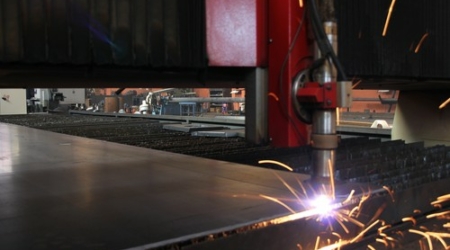When it comes to the evolution and development of automation and technology in the workplace, for many factories and places of industry, the revolution has already started. From the automation of manufacturing plants to the development of time and cost-friendly systems for customer service, this technology has already touched many aspects of the workplace – and will continue to evolve and enhance for the foreseeable future.
Automation in the present-day workplace
When it comes to the production of hundreds of millions of products worldwide, the use of automation is the rule rather than the exception. Many factories in the UK and across Europe are making use of robotics and automation technology as a way to increase the effectiveness of their working hours and to allow round the clock functionality without the need to spare time for lunch, breaks or downtime between shifts. As this technology gets smarter and more developed, it is being used more and more in the manufacturing industry, as well as the automation of factory-based work such as food packaging and even high-skill technologies such as aerospace production.
But the factory floor isn’t the only place you’ll find automation at play in the workplace. Automation is far more ingrained in our daily life and workplace than we may first consider. McKinsey gives the example of ATMs, which are an automated method of receiving cash that millions of people use on a daily basis. These automated machines have replaced one of the functions that previously fell to bank staff – and yet we use them every day without considering the fact that we’re using a robot to automate what was once a human-to-human process.
The same applies to technologies such as customer service helplines, where an automated system ferries customers to the best place for them to receive help; a computer-based, robotic system put in place to further automate a system that would previously be person-to-person.
How does automation affect the workplace?
There’s little doubt that as technology, robotics and other automation system have developed and evolved; they have become more integrated into the workplace. According to Electrical Engineering Portal, the introduction of automation to a manufacturing process can increase productivity, improve product quality and accomplish tasks consistently with no error or reduction in speed and quality. These are features unique to machines – people are fallible, and soon become bored and complacent with simple, repetitive work.
This may sound like automation could take over just about every essential manufacturing and factory role from the average person working in a factory. While in part, it’s true that specific tasks can be completed more efficiently by machine than by man, this doesn’t account for all work that is required to be completed. This is where automation can truly affect the workforce – by shifting the type of work we require from our employees.
According to HRD Magazine, the amount of automation in the workplace is expected to surge over the next few years – but this doesn’t mean that the machines are entirely replacing human positions. In fact, it has caused a shift in roles which will leave manufacturing plants and factories with requirements for excellent management and leadership to transition through these changes smoothly.
When it comes to the factory floor, menial or repetitive tasks may be covered in part by automated processes and robotics, but this increase will also lead to more maintenance and quality control jobs being required, to ensure what is produced meets expectation and requirements. Unlike people, machines don’t have logic that isn’t written and installed by a person – and as such, can’t make the snap judgments and leaps of logic required to do anything immediately outside of their programming code. This is where people will fill a new niche, by working alongside these new, time-saving, innovative machines.
The future of Automation
According to the WE Forum in 2016, we’re on the brink of the fourth Industrial Revolution – a revolution characterised by “a fusion of technologies that is blurring the lines between the physical, digital, and biological spheres”. Automation falls under this revolution, with the further development of robotics and other productivity tools for the workplace more prevalent than ever.
As with the previous industrial revolutions, new technology and rapidly advancing innovations will mean humanity has to think on its feet, and adapt to significant changes both in the workplace and out in the world as automation becomes the new standard. This doesn’t necessarily mean our work will become defunct; just that we need to adapt our way of working to make way for the latest technology.
At Subcon Laser, we love to be on the cutting edge of technology – literally. Contact us today to discover how our technology can contribute to the future of automation.









